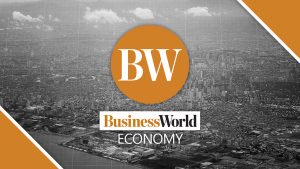(First of three parts)
The past three years have been an unwelcome rollercoaster ride for consumers everywhere. People prioritized their health when the pandemic initially broke out and drastically changed their actions and attitudes towards purchasing goods and services. As the pandemic’s effects on the economy became more pronounced, consumers began to focus more on accessibility and living expenses. As the crisis slowed, people began to give more importance to a new set of “post-crisis” ideals, particularly those related to sustainability.
However, the post-crisis period has not yet begun. Inflation has returned on a scale not seen in decades, interest rates are rising, the global economy is slowing down, geopolitics is being played out on a grand scale, and new COVID-19 variants keep appearing. It’s unclear if this confluence of events is ushering in a new crisis or merely escalating what we currently have, but the distinction will not likely matter in the eyes of customers.
The most recent edition of the EY Future Consumer Index demonstrates how accustomed people are to living in a constant state of crisis and uncertainty. Consumers globally are concerned about the future; as much as 63% do not see economic recovery within the next 12 months, and 62% anticipate an increase in living expenses during the following six months.
The EY Future Consumer Index examines shifting consumer attitudes and behaviors over a range of time horizons and across international markets, revealing the emergence of new consumer segments.
The Index has been tracking five main consumer segments since the pandemic began. These five segments describe the consumers that organizations will have to engage with beyond the pandemic. They reflect the different ways that people make their choices, how they will live their lives, and what truly matters to them.
Of these segments, two highlight the way consumers focus on living within their means and looking after the health of their families and themselves (“Affordability first” and “Health first”). Two other segments refer to the way some consumers prioritize environmental and social concerns (“Planet first” and “Society first”). The final segment identifies those who focus on living within the moment and maximizing their experiences (“Experience first”).
As people react to a chaotic world, the proportion of customers who fit into each sector has fluctuated over the past year. They are actively responding to — or at least attempting to respond to — the never-ending waves of change and uncertainty rather than merely reacting passively. Even while the world keeps presenting them with new obstacles, people are becoming more and more motivated to take charge of and mold their lives around their own wants and objectives. In fact, 58% of people say they feel more in charge of their lives, a situation they wish to maintain and sustain.
FUNDAMENTAL CHANGES IN THE CONSUMER LANDSCAPE
Consumers now have greater control over how they organize their time due to the rise in remote working, but they also want more control over other aspects of their lives including how they spend their money and disclose their personal information. While they are growing more frugal with their money, they are also feeling more confident about acting to defend their lifestyles and values. There are three key shifts in play that can be identified compared to previous financial crises:
1. Customers are more adaptable due to the pandemic experience.
People are becoming accustomed to instability and uncertainty. Nowadays, many people have what is known as the “always on emergency mindset.” They are more willing to give up long-held habits and adopt new ones because they are accustomed to making significant changes to how they live, from daily decisions to long-term objectives. They have discovered levels of resilience they were unaware they possessed.
2. They have more options thanks to the digital world.
The online world was a startlingly undeveloped place in 2008 and 2009, during the previous major financial crisis. The smartphone was a basic device and broadband connections moved slowly. Today, consumers can obtain information, discover alternatives, share their experiences, collaborate, and learn from one another much more easily. However, the digital age can simultaneously increase anxiety, intensify uncertainty, and overwhelm people with too much knowledge, ideas and new concepts, especially given the speed of digital transformation.
3. Consumer values have fundamentally changed.
Previous versions of the Index demonstrated how drastically consumer values have shifted as a result of the pandemic. Particularly, people’s interest in material possessions has diminished as they became more committed to leading ecological lifestyles. The most recent data demonstrate that despite the impact on their household budgets, people are unwilling to simply give up on their new beliefs. Instead, they want to find new ways to convey them.
What ramifications do these shifts pose for corporate executives? When a company’s ideals and activities are in line with the customers it hopes to serve, it succeeds; when they are not, it fails. Customers want to see their concerns and priorities mirrored back at them when deciding which brands to purchase. They increasingly focus on the company behind the brand rather than just the product, asking questions such as: what influence is it having on the globe, and is that impact consistent with its values?
In the second part of this three-part article, we discuss the key trends in consumer behavior identified by the Index: cost-cutting, where consumers substitute instead of sacrifice; sustainability, where consumers prioritize their values in living affordably and sustainably; and digital, where consumers are increasingly turning to emerging technology to take control of their finances.
This article is for general information only and is not a substitute for professional advice where the facts and circumstances warrant. The views and opinions expressed above are those of the author and do not necessarily represent the views of SGV & Co.
Maria Kathrina S. Macaisa-Peña is a business consulting partner and the consumer products and retail sector leader of SGV & Co.
